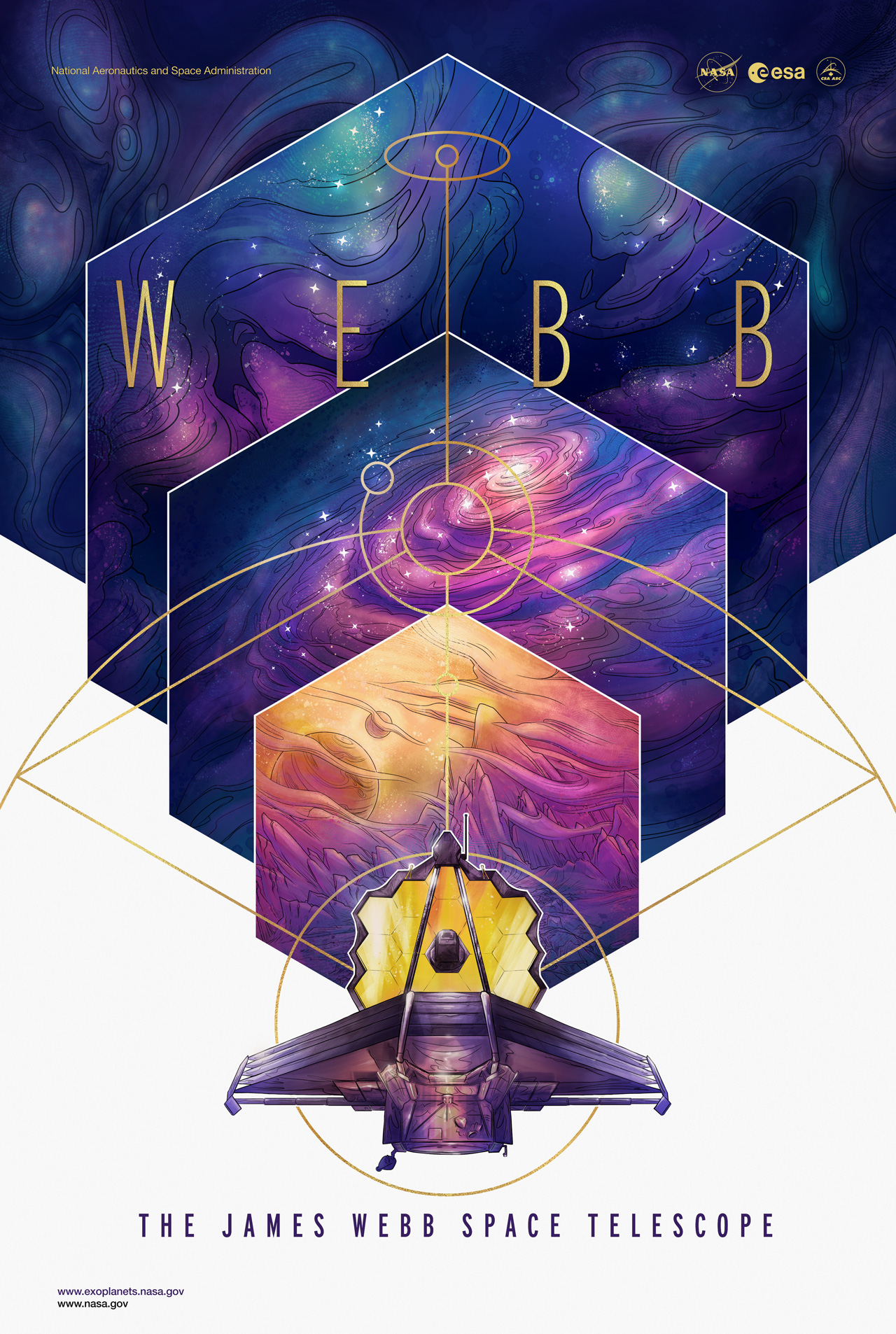James Webb Space Telescope Poster

| Credit | NASA/JPL-Caltech |
|---|---|
| Language |
|
NASA’s James Webb Space Telescope is a true technological marvel. The largest and most complex space telescope ever built, Webb is able to gather light that has been traveling for 13.5 billion years, almost since the beginning of the universe. In effect, Webb is a time machine, allowing us to peer at the first galaxies to form after the Big Bang. Because it gathers infrared light, sees right through the giant clouds of dust that block the view of most other telescopes. Webb is 100 times more powerful than the Hubble Space Telescope. Most notably, with its 21-foot-wide (6.5-meter-wide) set of segmented mirrors, Webb is powerful enough to search for water vapor in the atmospheres of planets orbiting other stars. It will open a new window on these exoplanets, observing them in wavelengths of light at which they have never been seen before and helping us gain new insights about their nature. Webb will help us understand how galaxies evolve over billions of years into grand spirals, like our own Milky Way, search for signs of habitability on distant planets, and penetrate into the hearts of dust-shrouded stellar nurseries. The observatory launched from South America on Christmas Day 2021.

